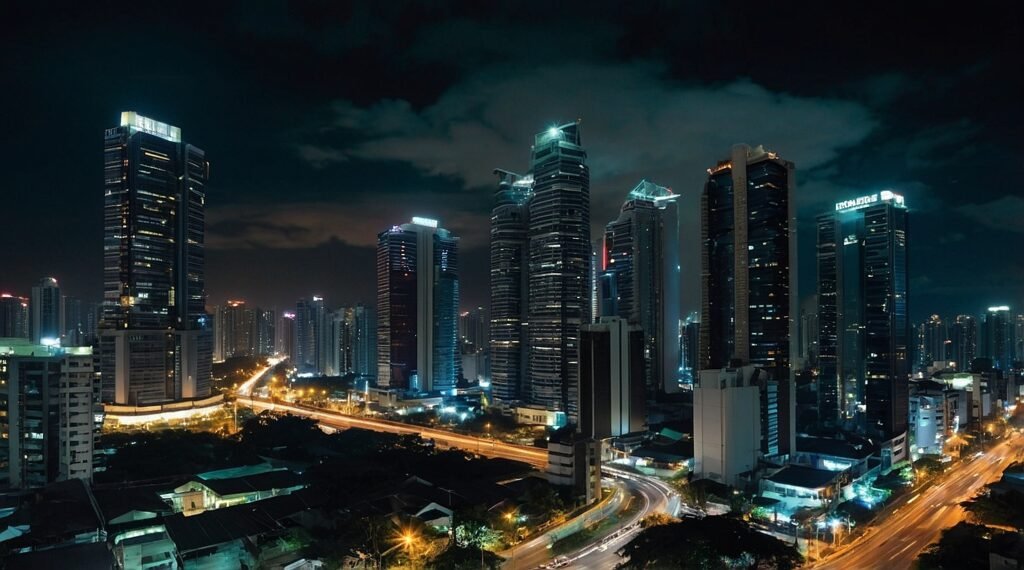The Philippine economy has been a subject of intense scrutiny and analysis in recent years, as it navigates the complex landscape of global economic forces and domestic challenges. As one of the fastest-growing economies in Southeast Asia, the Philippines has demonstrated remarkable resilience and potential. However, like any developing nation, it faces a unique set of strengths and weaknesses that shape its economic trajectory. This comprehensive analysis aims to delve into the various facets of the Philippine economy, examining its robust areas of growth alongside the persistent hurdles it must overcome. By exploring these aspects in detail, we can gain a nuanced understanding of the country’s economic position and its prospects for future development.
Historical Context
To fully appreciate the current state of the Philippine economy, it is essential to consider its historical context. The Philippines has undergone significant economic transformations since gaining independence in 1946. The country’s economic journey has been marked by periods of growth, stagnation, and recovery, influenced by various factors such as political instability, natural disasters, and global economic trends. In the 1960s and 1970s, the Philippines was considered one of the most promising economies in Asia. However, the 1980s saw a decline due to political turmoil and economic mismanagement. The 1990s and early 2000s were characterized by efforts to liberalize the economy and implement structural reforms. These historical experiences have shaped the modern Philippine economy, influencing its strengths and weaknesses in profound ways.
Key Economic Indicators
Before delving into the specific strengths and weaknesses of the Philippine economy, it is crucial to examine some key economic indicators that provide an overview of the country’s economic performance:
| Indicator | Value | Year |
|---|---|---|
| GDP (nominal) | $402.6 billion | 2023 est. |
| GDP growth rate | 5.6% | 2023 est. |
| GDP per capita | $3,646 | 2023 est. |
| Inflation rate | 6.1% | 2023 est. |
| Unemployment rate | 4.3% | 2023 est. |
| Poverty rate | 18.1% | 2021 |
These figures provide a snapshot of the Philippine economy’s current state and serve as a foundation for our analysis of its strengths and weaknesses.
Strengths of the Philippine Economy
The Philippine economy possesses several notable strengths that have contributed to its growth and resilience in recent years. Let’s examine these strengths in detail:
1. Robust Service Sector
The service sector is a cornerstone of the Philippine economy, accounting for a significant portion of its GDP and employment. This sector encompasses a wide range of industries, including:
- Business Process Outsourcing (BPO)
- Information Technology
- Tourism
- Retail
- Finance and Banking
The BPO industry, in particular, has been a major driver of economic growth, positioning the Philippines as a global leader in offshore services. The country’s large, English-speaking workforce and competitive labor costs have made it an attractive destination for multinational companies seeking to outsource various business functions.
2. Strong Remittances from Overseas Filipino Workers (OFWs)
Remittances from OFWs play a crucial role in the Philippine economy, providing a steady inflow of foreign currency and supporting domestic consumption. According to the Bangko Sentral ng Pilipinas (BSP), remittances reached $32.54 billion in 2022, accounting for approximately 8.9% of GDP. This substantial inflow of funds helps to:
- Boost household incomes
- Stimulate consumer spending
- Provide a buffer against external economic shocks
- Improve the country’s balance of payments
The resilience of remittance flows, even during global economic downturns, has been a key factor in maintaining economic stability in the Philippines.
3. Young and Growing Workforce
The Philippines boasts a young and growing workforce, with a median age of 25.7 years as of 2020. This demographic dividend presents several advantages for the economy:
- A large pool of working-age individuals
- Potential for increased productivity and innovation
- Higher potential for economic growth and development
- Opportunity to capitalize on the digital economy
To fully leverage this demographic advantage, the government and private sector must focus on education, skills development, and job creation to ensure that the young workforce is equipped to meet the demands of a rapidly evolving global economy.
4. Strategic Geographic Location
The Philippines’ archipelagic nature and strategic location in Southeast Asia provide unique economic advantages:
- Access to major shipping routes
- Potential for developing maritime industries
- Proximity to major Asian markets
- Opportunities for trade and investment partnerships
The country’s location has made it an attractive hub for regional operations of multinational companies and has facilitated its integration into global value chains.
5. Growing Digital Economy
The Philippines has seen rapid growth in its digital economy, driven by factors such as:
- High internet and mobile penetration rates
- Increasing adoption of e-commerce and digital payments
- Growing startup ecosystem
- Government initiatives to promote digital transformation
This shift towards digitalization has opened up new opportunities for economic growth, job creation, and innovation across various sectors.
Weaknesses of the Philippine Economy
Despite its strengths, the Philippine economy faces several challenges that hinder its full potential. Understanding these weaknesses is crucial for developing strategies to address them effectively:
1. Infrastructure Deficits
One of the most significant weaknesses of the Philippine economy is its inadequate infrastructure. This includes:
- Congested transportation networks
- Limited power generation and distribution capacity
- Inadequate water supply and sanitation systems
- Underdeveloped digital infrastructure in rural areas
These infrastructure gaps result in higher costs of doing business, reduced productivity, and limited access to economic opportunities for a significant portion of the population. The government has initiated ambitious infrastructure programs, such as the “Build, Build, Build” initiative, to address these issues, but progress has been slower than anticipated.
2. Income Inequality and Poverty
Despite economic growth, income inequality and poverty remain persistent challenges in the Philippines:
- High Gini coefficient (measure of income inequality): 42.3 (2018)
- Poverty incidence: 18.1% (2021)
- Limited access to quality education and healthcare for low-income groups
- Regional disparities in economic development
These issues not only affect social cohesion but also limit the country’s overall economic potential by reducing consumer spending power and human capital development.
3. Vulnerability to Natural Disasters
The Philippines’ geographical location makes it highly susceptible to natural disasters, including:
- Typhoons
- Earthquakes
- Volcanic eruptions
- Floods and landslides
These frequent natural calamities result in:
- Significant economic losses
- Disruptions to agricultural production
- Damage to infrastructure
- Diversion of resources from development to disaster response and recovery
The country’s vulnerability to climate change further exacerbates these challenges, requiring substantial investments in disaster risk reduction and climate adaptation measures.
4. Dependence on Imports
The Philippine economy exhibits a high dependence on imports, particularly for:
- Fuel and energy
- Raw materials for manufacturing
- Capital goods
- Food items
This import dependence contributes to:
- Trade deficits
- Vulnerability to global price fluctuations
- Limited development of domestic industries
- Challenges in achieving food security
Reducing import dependence through the development of domestic industries and diversification of energy sources remains a key challenge for policymakers.
5. Limited Foreign Direct Investment (FDI)
Compared to its Southeast Asian neighbors, the Philippines has struggled to attract substantial foreign direct investment due to factors such as:
- Restrictive foreign ownership policies
- Complex regulatory environment
- Infrastructure deficits
- Concerns about political stability and corruption
The following table illustrates the FDI inflows to selected Southeast Asian countries in 2022:
| Country | FDI Inflows (USD billions) |
|---|---|
| Singapore | 57.3 |
| Indonesia | 20.2 |
| Vietnam | 15.7 |
| Malaysia | 12.1 |
| Philippines | 9.2 |
Increasing FDI inflows is crucial for boosting economic growth, job creation, and technology transfer in the Philippines.
Government Initiatives and Reforms
Recognizing these strengths and weaknesses, the Philippine government has implemented various initiatives and reforms aimed at addressing challenges and capitalizing on opportunities:
1. Infrastructure Development
The “Build, Build, Build” program, launched in 2017, aims to accelerate infrastructure spending and address the country’s infrastructure deficits. Key projects include:
- Construction of new highways and railways
- Expansion of airports and seaports
- Development of mass transit systems in urban areas
- Improvement of digital infrastructure
While progress has been made, challenges such as funding constraints and implementation delays persist.
2. Economic Reforms
Recent economic reforms have focused on improving the business environment and attracting investments:
- Passage of the Corporate Recovery and Tax Incentives for Enterprises (CREATE) Act
- Amendments to the Foreign Investments Act
- Liberalization of the retail trade sector
- Efforts to streamline business registration processes
These reforms aim to enhance the country’s competitiveness and attract more foreign investments.
3. Human Capital Development
Recognizing the importance of its young workforce, the government has initiated programs to enhance human capital development:
- Implementation of the K-12 education system
- Expansion of scholarship programs for tertiary education
- Promotion of technical and vocational education and training (TVET)
- Initiatives to improve healthcare access and quality
These efforts are crucial for realizing the potential of the Philippines’ demographic dividend.
4. Digital Transformation
The government has launched several initiatives to promote digital transformation and support the growing digital economy:
- National Broadband Plan to improve internet connectivity
- Digital Philippines strategy to enhance e-governance and digital services
- Support for fintech and e-commerce development
- Promotion of digital skills training and literacy programs
These initiatives aim to position the Philippines as a digital economy leader in the region.
Conclusion
The Philippine economy presents a complex picture of strengths and weaknesses, reflecting its unique historical, geographical, and socio-economic context. Its robust service sector, strong remittance inflows, young workforce, strategic location, and growing digital economy provide a solid foundation for future growth. However, challenges such as infrastructure deficits, income inequality, vulnerability to natural disasters, import dependence, and limited FDI inflows must be addressed to unlock the country’s full economic potential.
The government’s ongoing initiatives and reforms demonstrate a commitment to addressing these challenges and capitalizing on the country’s strengths. Success will depend on effective implementation, sustained political will, and the ability to adapt to rapidly changing global economic conditions. As the Philippines continues to navigate these complexities, its economic trajectory will be shaped by how well it can leverage its strengths while mitigating its weaknesses.
The path forward for the Philippine economy requires a holistic approach that balances economic growth with social equity, environmental sustainability, and resilience to external shocks. By addressing its weaknesses and building upon its strengths, the Philippines has the potential to emerge as a significant economic player in the Asia-Pacific region and improve the lives of its citizens in the years to come.
Disclaimer: This blog post is based on economic data and information available as of April 2024. Economic conditions and government policies may have changed since then. While every effort has been made to ensure the accuracy of the information presented, readers are encouraged to verify current data and consult official sources for the most up-to-date information. If you notice any inaccuracies, please report them so we can correct them promptly.




